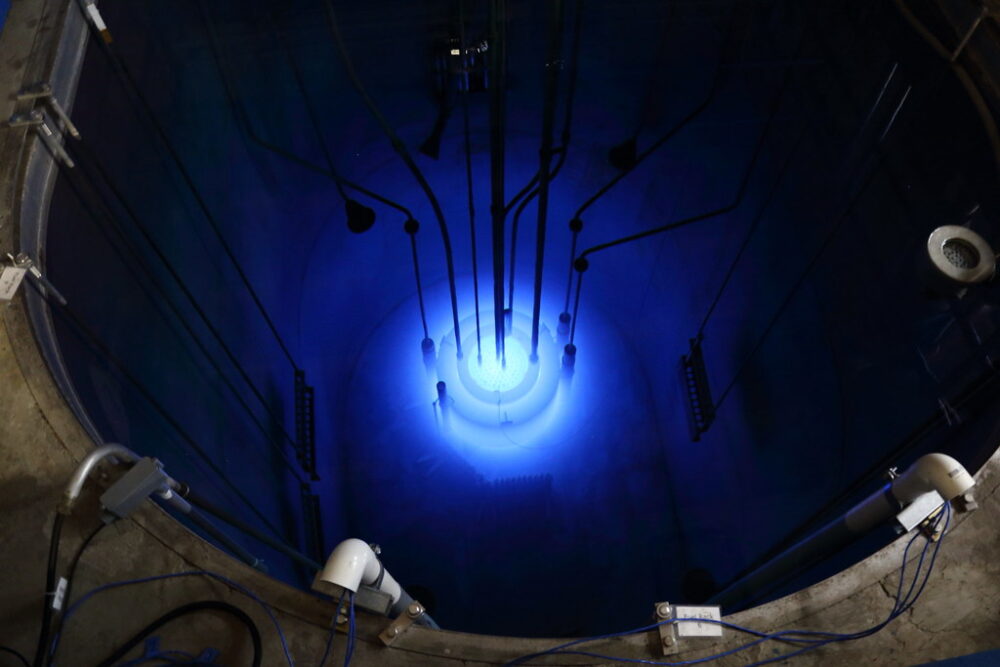Nuclear fusion power promises to revolutionize the world’s energy production infrastructure and combat climate change head-on. In the 1970s, physics researchers confidently proclaimed that nuclear fusion power was “30 years away.” The phrase has been parroted time and time again, reverberating through popular science, but as time moved forward, the 30-year estimate remained constant — to the point where it has become an inside joke for scientists in the field.
In nuclear physics, the “binding energy” of an atomic nucleus is the amount of energy released, or lost to the environment, when protons and neutrons bond to form an atom. For small atoms, like hydrogen and helium, as atomic size increases, the amount of this missing atomic energy quickly skyrockets up until it plateaus just past oxygen. For larger atoms, the energy begins to decrease with size. Physicists have learned to harness this energy in modern nuclear fission power plants by starting with large elements, like uranium, and breaking them apart into smaller elements with slightly greater amounts of missing energy. Through conservation of energy, this energy missing from the atoms must go somewhere, so it takes the form of thermal energy which can be converted into electricity.
While fission plants successfully harness the energy of this process, they miss out on the elusive skyrocketing of energy released from combining smaller elements through fusion. Furthermore, fusion plants cannot meltdown like fission plants, since fusion cannot happen spontaneously in Earth-like conditions, and their radioactive waste decays in decades instead of centuries.
While fission plants successfully harness the energy of this process, they miss out on the elusive skyrocketing of energy released from combining smaller elements through fusion.
Fusion occurs naturally only in stars, so harnessing fusion power requires replicating those conditions on Earth: creating a plasma of free-flying electrons and ions at 150 million degrees Celsius. Fusion was first achieved in 1951, and progress toward sustained power production took off in the 1970s. This progress was fueled by a previously-niche method for creating high-energy plasma — a donut-shaped magnetic chamber called a tokamak. This bolstered the confidence of nuclear physicists, leading to the “30-year” claim. The rush of progress culminated at the end of the Cold War with the announcement of the International Thermonuclear Experimental Reactor project (ITER): a massive international collaboration between Europe, Japan, the United States, and the USSR to build an 18-story-tall tokamak. ITER set out to prove the commercial viability of fusion power by achieving fusion breakeven, getting more energy out through fusion than put into the plasma.
But by the turn of the century — the 30-year mark proclaimed by the confident ‘70s physicists — ITER progress was slow, and individual research groups stalled in the push to fusion breakeven. Scientists began placing more and more of their focus and hope in ITER.
This, understandably, has many in the field worried — placing too many resources in one project and one fusion method could deliver a fatal blow to humanity’s endeavor into fusion should it fail.
This, understandably, has many in the field worried — placing too many resources in one project and one fusion method could deliver a fatal blow to humanity’s endeavor into fusion should it fail. This has sparked a new counterculture in the field to try alternative methods to ITER’s tokamak approach. The United States’ advanced energy research agency is pursuing new tokamak shapes and higher-pressure methods to energize plasma using lasers instead of magnets, as well as researching ways to solve some of the major engineering challenges plaguing fusion endeavors.
The Swiss Plasma Center recently partnered with an AI company acquired by Google, DeepMind, to successfully control the plasma flow in a tokamak with machine learning. The project involved feeding the AI a desired plasma shape and letting it learn how to create that shape and control it in a simulated fusion reactor, then running the developed controls on a real reactor. The program was a success and allowed the team to shift their focus to developing efficient and effective plasma shapes.
The reality is, as with any new technology pushing the bounds of human capability, it’s impossible to foresee the challenges that still lie ahead, and therefore impossible to predict how “far away” fusion really is.
As it stands, ITER plans to begin power production in 2025 and hopes to achieve the elusive sustained fusion breakeven in 2035. A handful of nations, including Japan and China, have announced plans for domestic fusion reactors that build upon the learnings of ITER – while the US focuses on supporting private companies developing fusion technology through parallel government research programs and regulatory development.
The reality is, as with any new technology pushing the bounds of human capability, it’s impossible to foresee the challenges that still lie ahead, and therefore impossible to predict how “far away” fusion really is. All we can truly analyze is physical feasibility, progress, and human determination. With deep international collaboration, renewed momentum, and stronger technology diversification, fusion is proving strong in all three.
IntechOpen (2018). DOI: 10.5772/intechopen.80241
Nature (2022). DOI: 10.1038/s41586-021-04301-9

